The Coastal Solutions Program at the XII South American Bird Fair
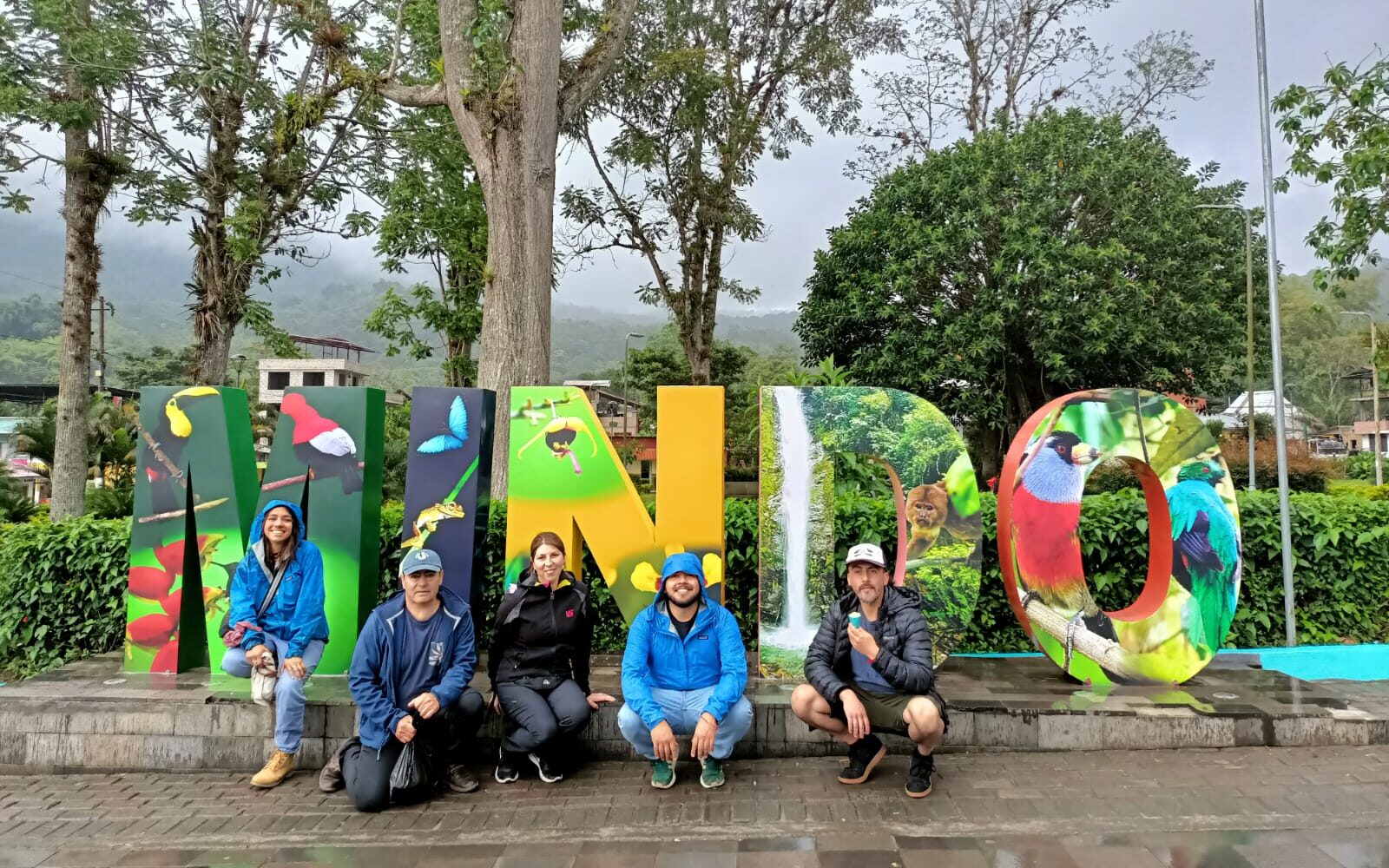
By: Daniela Ruz & Eliana Montenegro
– Two sustainable tourism and shorebird initiatives, part of Coastal Solutions projects in Chile and Ecuador, were presented at this important bird and birding fair.
– The sustainable community-based tourism initiative in La Segua, Ecuador, was selected as one of the five best commercial exhibits and won a place at the Global Bird Fair in Rutland, UK.
Last October, the Coastal Solutions Program was part of the XII South American Bird Fair, alongside Fellows Daniela Ruz from Chile and Eliana Montenegro from Ecuador. This annual meeting was held in Mindo, Ecuador, one of the most diverse birding sites in the world and a spectacular venue for the continent’s most important birding and bird tourism fair. This international event attracts bird enthusiasts and researchers, as well as environmental organizations, community projects, and the tourism sector, with a wide range of national and international experts invited to give keynote lectures, talks, and specialized workshops. Visitors participated in a series of forums, symposia, and exchange activities with other professionals from the region and from around the world. This also included an informative trade fair, with samples of tourism, equipment, books, bird guides, and much more. This year more than 2000 people from many countries in Latin America, North America and even Europe participated in this fair, where Coastal Solutions Fellows Daniela and Eliana participated with their respective projects.
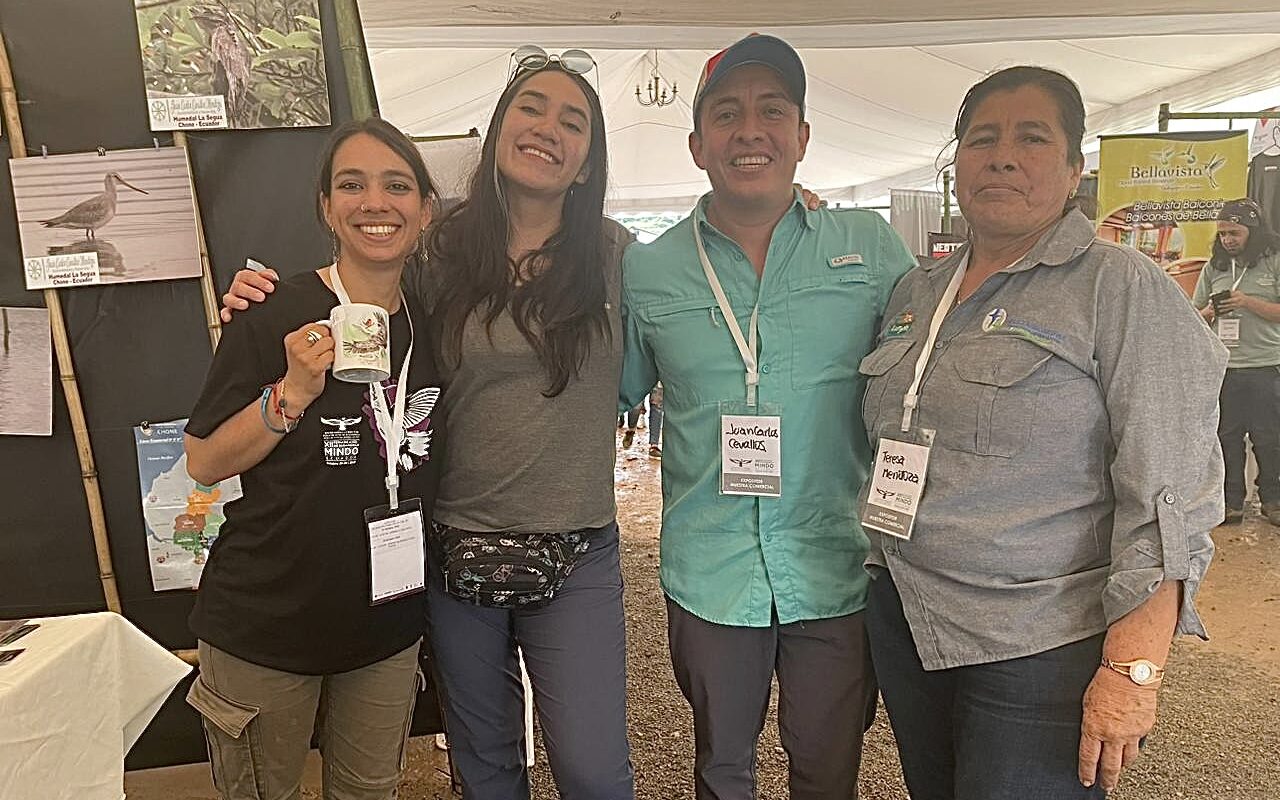
Daniela Ruz, 2023 fellow, participated in the trade fair with an informative display of her project “Sustainable Community-based Tourism: Strategy for the conservation of shorebirds at 3 sites in southern Chile”. She was accompanied at the event by valuable collaborators of her project, including her team from Fundación Conservación Marina (FCM), Camilo Navarro, representative of the local government of Maullín, and Moisés Barrientos and Miriam Solar from the venture “Aviturismo Maullín Expediciones”, both members of the commune of Maullín.
The wetland system formed by the Maullín River has a fascinating diversity, ideal for thousands of waterfowl, many of them boreal migrants. In 2016, five wetlands located in the lower reaches of the river were recognized as priority sites for their importance to migratory birds, and incorporated into the Western Hemisphere Shorebird Reserve Network (WHSRN). Because of its importance for biodiversity conservation, in 2022 it was also officially decreed a ‘Nature Sanctuary’, a figure of legal protection of the State of Chile. Among its conservation targets are the shorebird community and also the Chilean flamingo (Phoenicopterus chilensis), both strong tourist attractions, especially for birdwatchers, photographers, and nature lovers looking to enjoy their natural surroundings.
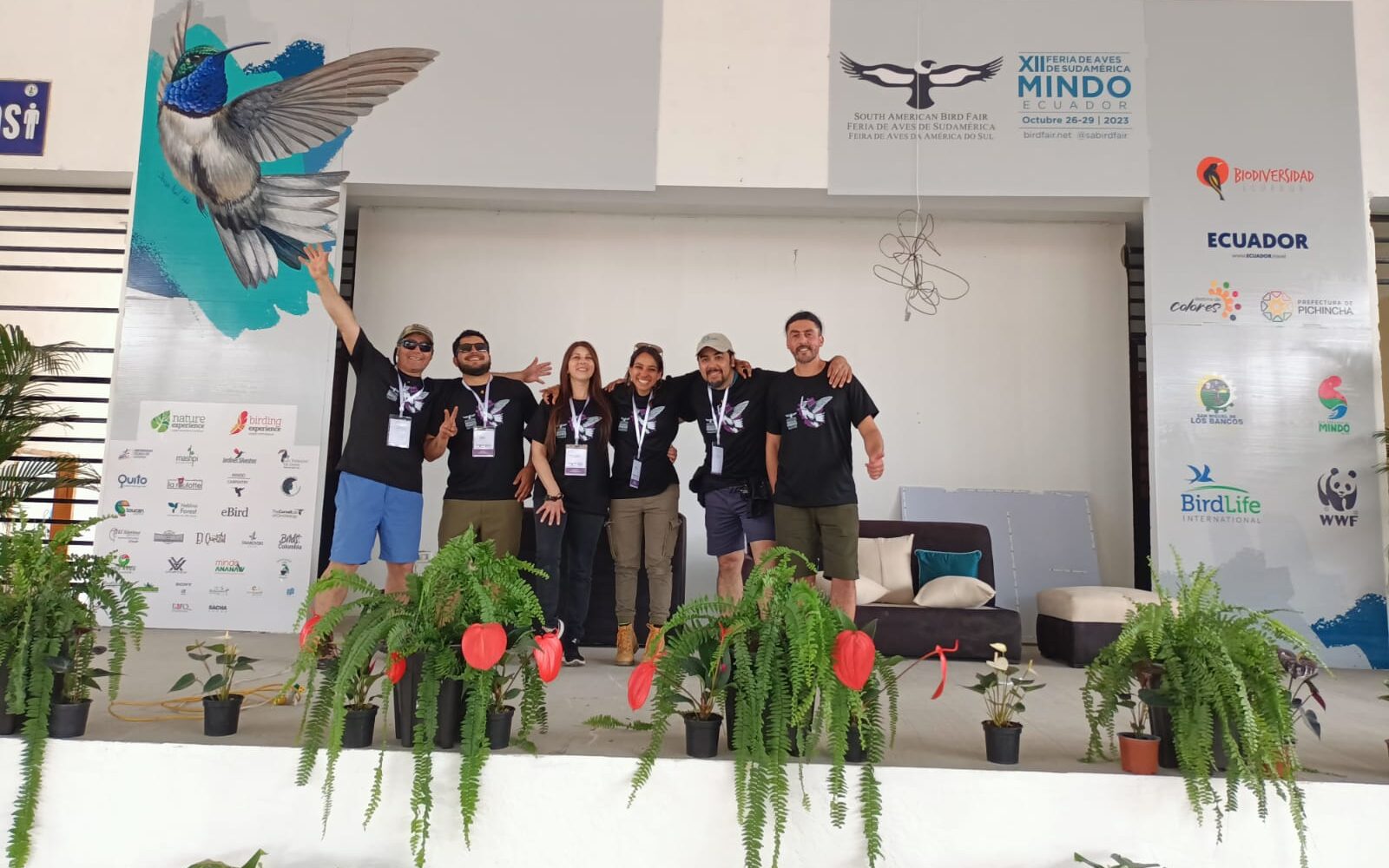
Daniela and her team shared the activities that have been carried out, and the preliminary results of their project, including their experiences in the training delivered to birdwatching operators and the development of local public policies, which are a fundamental part of their efforts to reduce disturbances caused by irregular tourism practices.
Another strong point of Daniela’s project is community involvement with a focus on sustainable tourism operators, which is why, together with the FCM, they awarded a grant to “Aviturismo Maullín Expediciones” venture to participate in the Fair for being key actors and precursors of sustainable tourism in Maullín. Moisés Barrientos and Miriam Solar acted on behalf of the local tourism operators in the region, with the objective of strengthening the capacities generated by the exchange, creating networks and experience, promoting Maullín as a sustainable avitourism destination, and sharing the knowledge acquired in their territory.
During her time in Ecuador, Daniela also had the opportunity to collaborate with Paola Villalba, Director of Tourism for the Jocotoco Foundation in Ecuador, as part of her professional development. Daniela, along with Maullín’s local government collaborator, Camilo Navarro, visited several facilities of the Jocotoco Foundation and the Jocotours company in three of their reserves: Chakana, Yanacocha and Canandé, located in different corners of Ecuador. This experience helped to strengthen their knowledge of the structure, infrastructure, facilitation, logistics and coordination of the tourism offer, focused on birdwatching and sustainable tourism, but above all, the need to increase the implementation of conservation actions through sustainable tourism.
Both Daniela and Eliana have benefited from collaborating with Paola Villalba and Jocotours in the development of tourism plans for their projects. Eliana and Enrique Fornasini, 2021 and 2023 Fellows, respectively, both from Ecuador, work with Paola as one of their main collaborators in their Coastal Solutions projects in La Segua, Ecuador. Eliana was part of Bird Fair along with Birdlife International, with whom she has worked for since 2021, to celebrate the launch of an investment plan for the conservation of resident and migratory birds of the Chocó-Northwestern Ecuadorian Andes. She was also part of the fair with the ‘Humedal La Segua’ initiative, her Coastal Solutions project, presenting on the tourism offer and conservation plans that exist at the site.
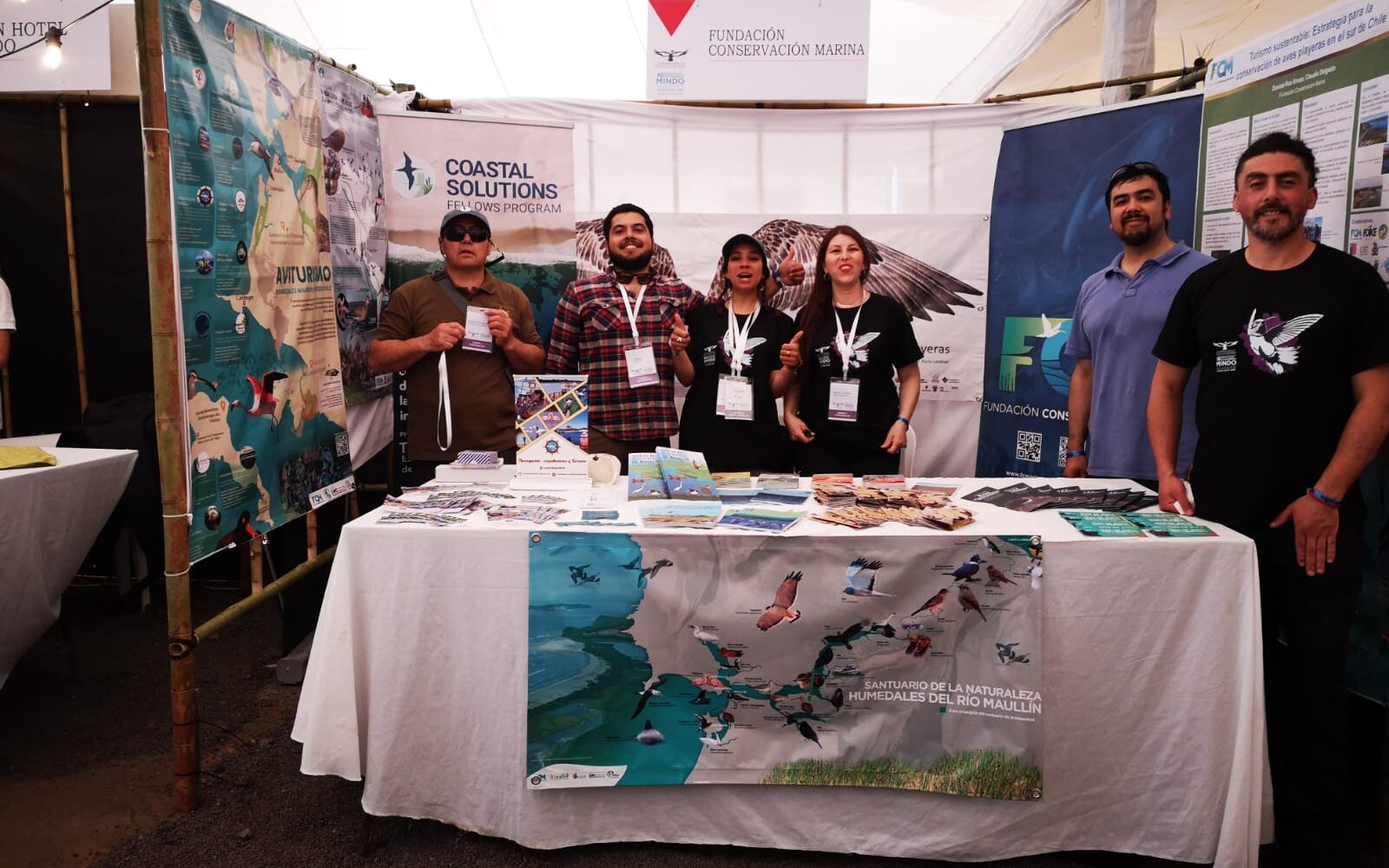
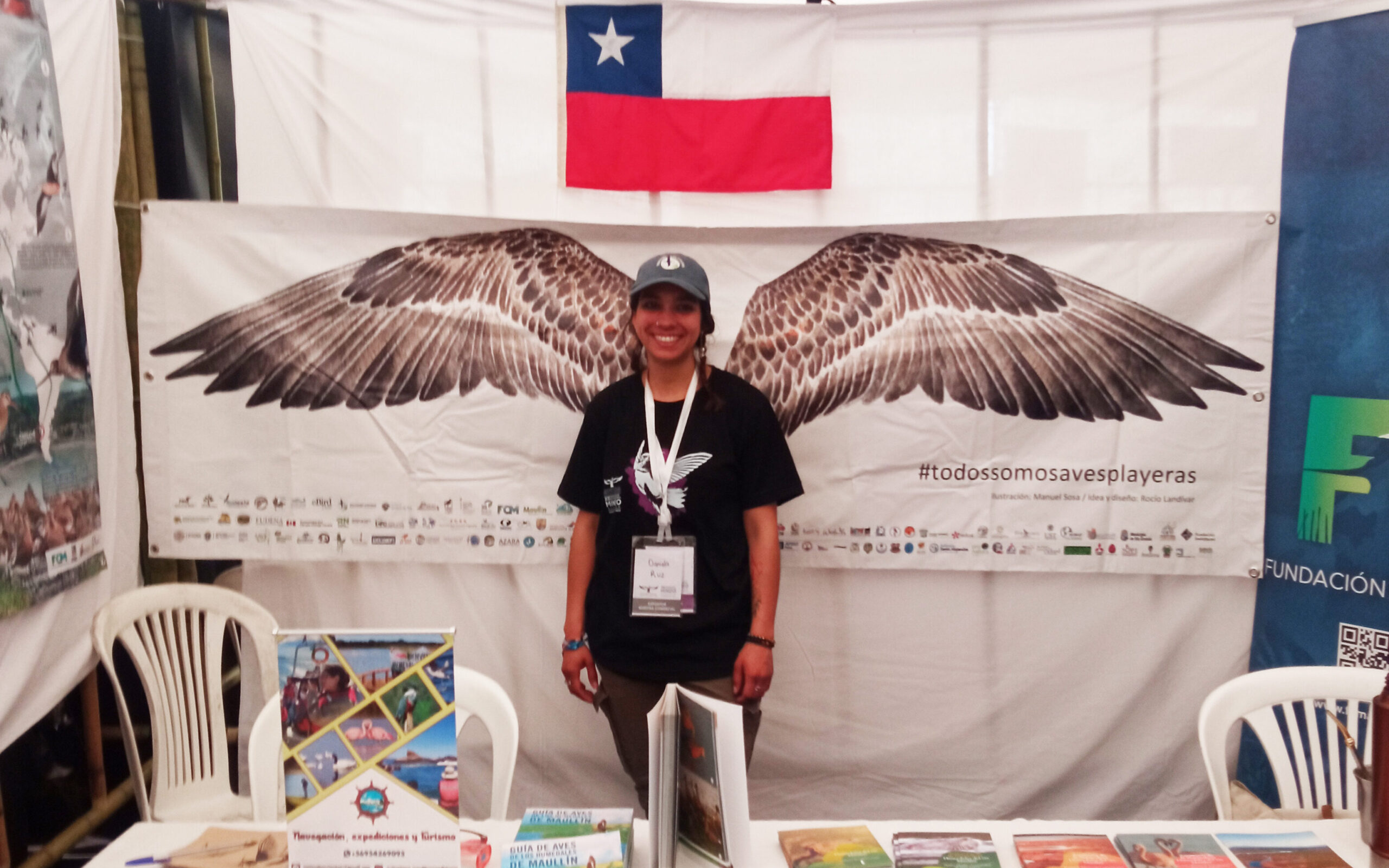
The La Segua wetland is a huge lagoon, which at first glance gives the impression of reaching the sea, but is actually a freshwater estuary with an area of over 1700 hectares, formed at the confluence of the Carrizal and Chone rivers in the province of Manabí, Ecuador. It is part of the Chone River Estuary bio corridor, which connects La Segua with the Corazon and Fragatas islands on its way out to the Pacific Ocean. The site is well known by birdwatchers for its great diversity of waterfowl and migratory shorebirds.
Since 2021, thanks to the Coastal Solutions Program, Eliana has had the opportunity to work at the site to understand its complex social and environmental dynamics. Despite having obtained international recognitions, such as the designation as a Wetland of International Importance (Ramsar Site), the La Segua Wetland still lacks adequate governmental protection and is not part of the National System of Protected Areas.
Eliana’s project was socialized as a seed project that would reap results in the future. Two years after the project began, we are beginning to see results, including training for La Segua’s association of tourist guides in ornithology and conservation, habitat restoration through landscape interventions, and bird monitoring to update baselines. Conservation easement contracts have also been signed with the shrimp sector, establishing agreements with artisanal shrimp producers to guarantee the use of certain ponds as shorebird habitat during the shorebird migration months, as these are suitable habitats for resting and feeding. In exchange, the producers are part of alternative economic activities in avitourism during these non-production months.
The seed continues to grow today with the project of 2023 Fellow Enrique Fornasini, who was Eliana’s collaborator and now works with Paola to increase the tourism capacity at La Segua. The site has great potential to be expanded as a national and international tourist destination, as it already has an autonomous association of local guides working to offer tourism at the site, and an access trail known as the ‘Sendero Los Caimanes’, named after another of the native and recovered species in the wetland. Visitors can enjoy a wide range of attractions, including boating and hiking, as well as experiencing a unique cultural and gastronomic environment. These experiences are complemented by the opportunity to see more than 150 species of birds, both aquatic and terrestrial. The wetland is also strategically connected to beaches that are very attractive and popular among national tourists, offering a novel alternative beyond the traditional ones. Although the site is not yet part of the established international tourist routes, with the proper support of local authorities, there is the potential to expand and consolidate as an attraction of great importance for the province and the country.
The participation and enthusiasm of key players in this project has allowed La Segua to grow within the tourism and community sphere. Teresa Mendoza – owner of the area where the ‘Sendero Los Caimanes’ is located – has contributed in an unparalleled way to the development of the projects. Her interest in the conservation of the site has led her to be the first to sign a conservation easement agreement with one of her shrimp ponds; and has helped immensely in the social rapprochement with other members of the community. She has also dedicated herself to learning to identify birds and working to learn more about their ecology and conservation. Thus, Teresa has established herself as the best identifier of migratory shorebirds in the wetland. Similarly, Juan Carlos Cevallos, president of the Association of Guides of La Segua, a leader in the management of the site, is another important actor who has brought some projects to the site. Among them, the construction of tourism infrastructure supported by USAID in 2010, carried out under his management as president of the association. It is also important to recognize the participation of María Auxiliadora Corral and Verónica García, two female guides whose participation and support in the various activities of the project has been decisive for the fulfilment of the objectives.
The initiative that Enrique is leading will give continuity to activities that emerged from the previous project, such as bird monitoring and conservation easements, but together with Paola, he will also explore in greater depth the subject of ecotourism as an economic alternative for local inhabitants. A first step in this new project was to support Teresa and Juan Carlos to participate in the XII South American Bird Fair. The participation of the ‘Humedal La Segua’ as a commercial exhibit was highlighted within the fair thanks to the fact that the activities are focused on tourism and conservation. This effort bore great fruit, as this initiative was selected as one of the five best commercial exhibits at the South American Bird Fair and won a place at the Global BirdFair in Rutland, UK, in 2024. Undoubtedly, this is a great start to position La Segua in the international bird tourism market, and an opportunity to increase the community’s interest in developing the site in harmony with the natural environment.
The XII South American Bird Fair was a unique opportunity for the Coastal Solutions Program Fellows, and their collaborators to gain experience and knowledge to strengthen the development of their projects, expanding and strengthening their networks. At the same time, this event allowed a greater reach of their sustainable tourism initiatives with an international audience, which has allowed them to lay the groundwork for future success.